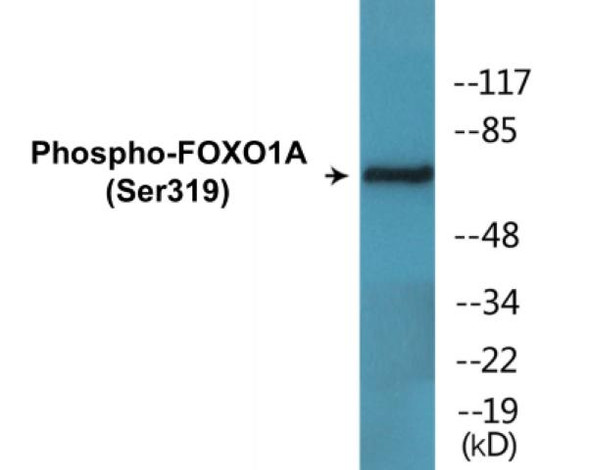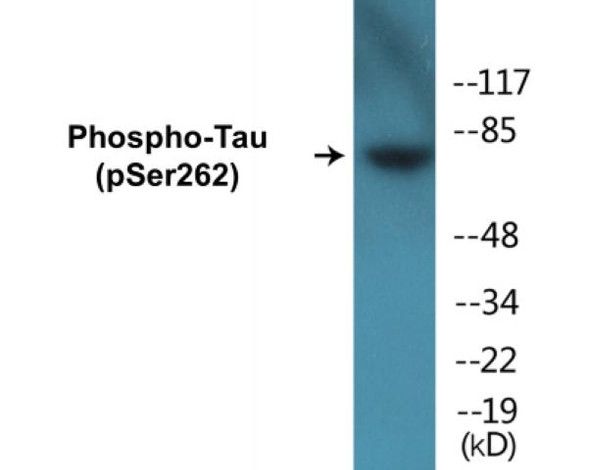BTK (Phospho-Tyr551) Fluorometric Cell-Based ELISA Kit
- SKU:
- FBCAB00094
- Product Type:
- ELISA Kit
- ELISA Type:
- Cell Based Phospho Specific
- Reactivity:
- Human
- Mouse
- Rat
- Detection Method:
- Fluorometric
Description
BTK (Phospho-Tyr551) Cell-Based ELISA Kit
The BTK (Phospho-Tyr551) Cell-Based ELISA Kit is a convenient, lysate- free, high throughput and sensitive assay kit that can monitor BTK phosphorylation and expression profile in cells. The kit can be used for measuring the relative amounts of phosphorylated BTK in cultured cells as well as screening for the effects that various treatments, inhibitors (ie. siRNA or chemicals), or activators have on BTK phosphorylation.
How does our BTK (Phospho-Tyr551) Fluorometric Cell-Based ELISA Kit work?
Qualitative determination of BTK (Phospho-Tyr551) concentration is achieved by an indirect ELISA format. In essence, BTK (Phospho-Tyr551) is captured by BTK (Phospho-Tyr551)-specific primary (1°) antibodies while Dye 1-conjugated and Dye 2-conjugated secondary (2°) antibodies bind the Fc region of the 1° antibody. Through this binding, the dye conjugated to the 2° antibody can emit light at a certain wavelength given proper excitation, hence allowing for a fluorometric detection method. Due to the qualitative nature of the Cell-Based ELISA, multiple normalization methods are needed:
| 1. | A monoclonal antibody specific for human GAPDH is included to serve as an internal positive control in normalizing the target RFU values. |
| 2. | An antibody against the nonphosphorylated counterpart of BTK (Phospho-Tyr551) is also provided for normalization purposes. The RFU values obtained for non-phosphorylated BTK can be used to normalize the RFU value for phosphorylated BTK. |
BTK (Phospho-Tyr551) Fluorometric Cell-Based ELISA Kit -Information
| Product Name: | BTK (Phospho-Tyr551) Fluorometric Cell-Based ELISA Kit |
| Product Code/SKU: | FBCAB00094 |
| Description: | The BTK (Phospho-Tyr551) Fluorometric Cell-Based Phospho ELISA Kit is a convenient, lysate-free, high throughput and sensitive assay kit that can monitor BTK (Phospho-Tyr551) protein phosphorylation and expression profile in cells. The kit can be used for measuring the relative amounts of phosphorylated BTK (Phospho-Tyr551) in cultured cells as well as screening for the effects that various treatments, inhibitors (ie. siRNA or chemicals, or activators have on BTK phosphorylation. |
| Dynamic Range: | > 5000 Cells |
| Detection Method: | Fluorometric |
| Storage/Stability: | 4°C/6 Months |
| Reactivity: | Human, Mouse, Rat |
| Assay Type: | Cell-Based ELISA |
| Database Links: | Gene ID: 695, UniProt ID: Q06187, OMIM #: 300300/300755/307200, Unigene #: Hs.159494 |
| Format: | Two 96-Well Plates |
| NCBI Gene Symbol: | BTK |
| Sub Type: | Phospho |
| Target Name: | Phospho-BTK (Tyr708) |
Kit Principle
Figure: Schematic representation of Assay Genie Cell-Based Fluorometric ELISA principle
Kit components | Quantity |
| 96-Well Black Cell CultureClear-Bottom Microplate | 2 plates |
| 10X TBS | 24 ml |
| Quenching Buffer | 24 ml |
| Blocking Buffer | 50 ml |
| 15X Wash Buffer | 50 ml |
| Primary Antibody Diluent | 12 ml |
| 100x Anti-Phospho Target Antibody | 60 µl |
| 100x Anti-Target Antibody | 60 µl |
| Anti-GAPDH Antibody | 110 µl |
| Dye-1 Conjugated Anti-Rabbit IgG Antibody | 6 ml |
| Dye-2 Conjugated Anti-Mouse IgG Antibody | 6 ml |
| Adhesive Plate Seals | 2 seals |
Additional equipment and materials required
The following materials and/or equipment are NOT provided in this kit but are necessary to successfully conduct the experiment:
- Fluorescent plate reader with two channels at Ex/Em: 651/667 and 495/521
- Micropipettes capable of measuring volumes from 1 µl to 1 ml
- Deionized or sterile water (ddH2O)
- 37% formaldehyde (Sigma Cat# F-8775) or formaldehyde from other sources
- Squirt bottle, manifold dispenser, multichannel pipette reservoir or automated microplate washer
- Graph paper or computer software capable of generating or displaying logarithmic functions
- Absorbent papers or vacuum aspirator
- Test tubes or microfuge tubes capable of storing ≥1 ml
- Poly-L-Lysine (Sigma Cat# P4832 for suspension cells)
- Orbital shaker (optional)
Kit Protocol
This is a summarized version of the kit protocol. Please view the technical manual of this kit for information on sample preparation, reagent preparation and plate lay out.
| 1. | Seed 200 µl of desired cell concentration in culture medium into each well of the 96-well plates. For suspension cells and loosely attached cells, coat the plates with 100 µl of 10 µg/ml Poly-L-Lysine (not included) to each well of a 96-well plate for 30 minutes at 37°C prior to adding cells. |
| 2. | Incubate the cells for overnight at 37°C, 5% CO2. |
| 3. | Treat the cells as desired. |
| 4. | Remove the cell culture medium and rinse with 200 µl of 1x TBS, twice. |
| 5. | Fix the cells by incubating with 100 µl of Fixing Solution for 20 minutes at room temperature. The 4% formaldehyde is used for adherent cells and 8% formaldehyde is used for suspension cells and loosely attached cells. |
| 6. | Remove the Fixing Solution and wash the plate 3 times with 200 µl 1x Wash Buffer for 3 minutes. The plate can be stored at 4°C for a week. |
| 7. | Add 100 µl of Quenching Buffer and incubate for 20 minutes at room temperature. |
| 8. | Wash the plate 3 times with 1x Wash Buffer for 3 minutes each time. |
| 9. | Dispense 200 µl of Blocking Buffer and incubate for 1 hour at room temperature. |
| 10. | Wash 3 times with 200 µl of 1x Wash Buffer for 3 minutes each time. |
| 11. | Add 50 µl of Primary Antibody Mixture P to corresponding wells for BTK (Phospho-Tyr551) detection. Add 50 µl of Primary Antibody Mixture NP to the corresponding wells for total BTK detection. Cover the plate with parafilm and incubate for 16 hours (overnight) at 4°C. If the target expression is known to be high, incubate for 2 hours at room temperature. |
| 12. | Wash 3 times with 200 µl of 1x Wash Buffer for 3 minutes each time. |
| 13. | Add 50 ul of Secondary Antibody Mixture to corresponding wells and incubate for 1.5 hours at room temperature in the dark. |
| 14. | Wash 3 times with 200 µl of 1x Wash Buffer for 3 minutes each time. |
| 15. | Read the plate(s) at Ex/Em: 651/667 (Dye 1) and 495/521 (Dye 2). Shield plates from direct light exposure. |
| 16. | Wash 3 times with 200 µl of 1x Wash Buffer for 5 minutes each time. |
BTK (Phospho-Tyr551) - Protein Information
| UniProt Protein Function: | Btk: a tyrosine kinase of the Tec family. Plays a crucial role in B-cell ontogeny. Defects cause X-linked agammaglobulinemia, an immunodeficiency characterized by failure to produce mature B lymphocyte cells and associated with a failure of Ig heavy chain rearrangement. Truncated splice forms found in childhood leukemias may underlie radiation resistance of tumors through inhibition of apoptosis. |
| UniProt Protein Details: | Protein type:Kinase, protein; Protein kinase, TK; EC 2.7.10.2; Protein kinase, tyrosine (non-receptor); TK group; Tec family Cellular Component: cytoplasm; cytoplasmic vesicle; cytosol; extrinsic to internal side of plasma membrane; intracellular membrane-bound organelle; lipid raft; mast cell granule; membrane; nucleus; perinuclear region of cytoplasm; plasma membrane Molecular Function:ATP binding; identical protein binding; kinase activity; lipid binding; metal ion binding; non-membrane spanning protein tyrosine kinase activity; nucleotide binding; phosphatidylinositol-3,4,5-triphosphate binding; protein binding; protein kinase activity; protein-tyrosine kinase activity; transferase activity Biological Process: adaptive immune response; apoptosis; cell maturation; histamine secretion by mast cell; I-kappaB kinase/NF-kappaB cascade; immune system process; innate immune response; negative regulation of cytokine production; peptidyl-tyrosine phosphorylation; phosphorylation; protein amino acid autophosphorylation; protein amino acid phosphorylation; regulation of cell proliferation; regulation of transcription, DNA-dependent; response to organic substance; transcription, DNA-dependent; transmembrane receptor protein tyrosine kinase signaling pathway |
| NCBI Summary: | The protein encoded by this gene plays a crucial role in B-cell development. Mutations in this gene cause X-linked agammaglobulinemia type 1, which is an immunodeficiency characterized by the failure to produce mature B lymphocytes, and associated with a failure of Ig heavy chain rearrangement. Alternative splicing results in multiple transcript variants encoding different isoforms. [provided by RefSeq, Dec 2013] |
| UniProt Code: | Q06187 |
| NCBI GenInfo Identifier: | 547759 |
| NCBI Gene ID: | 695 |
| NCBI Accession: | Q06187.3 |
| UniProt Secondary Accession: | Q06187,Q61365, |
| UniProt Related Accession: | Q06187 |
| Molecular Weight: | |
| NCBI Full Name: | Tyrosine-protein kinase BTK |
| NCBI Synonym Full Names: | Bruton tyrosine kinase |
| NCBI Official Symbol: | BTK |
| NCBI Official Synonym Symbols: | AT; ATK; BPK; XLA; IMD1; AGMX1; PSCTK1 |
| NCBI Protein Information: | tyrosine-protein kinase BTK |
| UniProt Protein Name: | Tyrosine-protein kinase BTK |
| UniProt Synonym Protein Names: | Agammaglobulinemia tyrosine kinase; ATK; B-cell progenitor kinase; BPK; Bruton tyrosine kinase; Kinase EMB |
| Protein Family: | Tyrosine-protein kinase |
| UniProt Gene Name: | Btk |
| UniProt Entry Name: | BTK_MOUSE |











